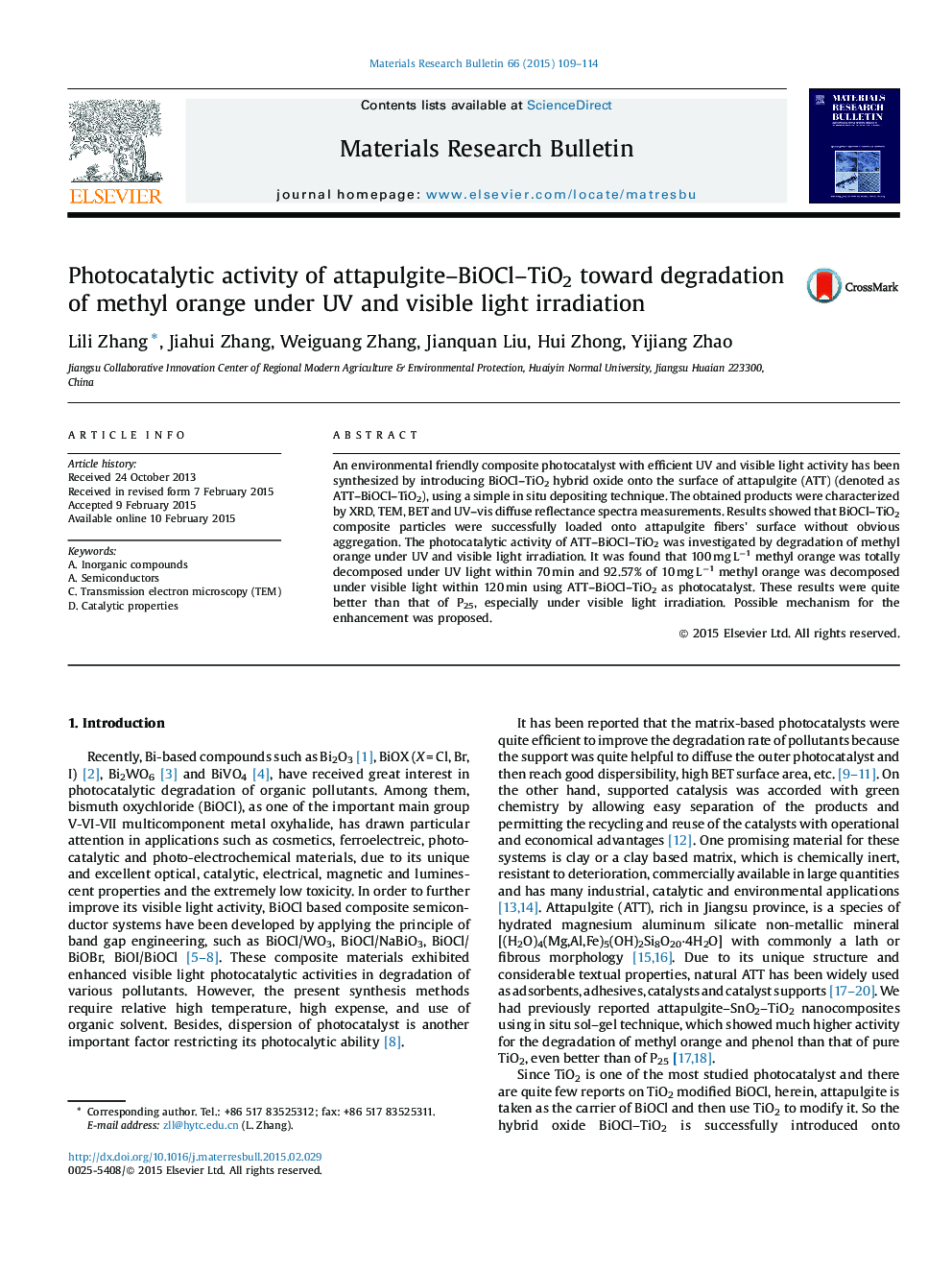| Article ID | Journal | Published Year | Pages | File Type |
|---|---|---|---|---|
| 1487921 | Materials Research Bulletin | 2015 | 6 Pages |
•Excellent photocatalyst was obtained by introducing BiOCl–TiO2 onto attapulgite.•100 mg L−1 methyl orange (MO) was totally decomposed under UV light within 70 min.•92.6% of 10 mg L−1 MO was decomposed within 120 min under visible light.•ATT–BiOCl–TiO2 show better activity than P25 especially under visible light.•Mechanism of photocatalytic activity enhancement was identified.
An environmental friendly composite photocatalyst with efficient UV and visible light activity has been synthesized by introducing BiOCl–TiO2 hybrid oxide onto the surface of attapulgite (ATT) (denoted as ATT–BiOCl–TiO2), using a simple in situ depositing technique. The obtained products were characterized by XRD, TEM, BET and UV–vis diffuse reflectance spectra measurements. Results showed that BiOCl–TiO2 composite particles were successfully loaded onto attapulgite fibers' surface without obvious aggregation. The photocatalytic activity of ATT–BiOCl–TiO2 was investigated by degradation of methyl orange under UV and visible light irradiation. It was found that 100 mg L−1 methyl orange was totally decomposed under UV light within 70 min and 92.57% of 10 mg L−1 methyl orange was decomposed under visible light within 120 min using ATT–BiOCl–TiO2 as photocatalyst. These results were quite better than that of P25, especially under visible light irradiation. Possible mechanism for the enhancement was proposed.
Graphical abstractFigure optionsDownload full-size imageDownload as PowerPoint slide
